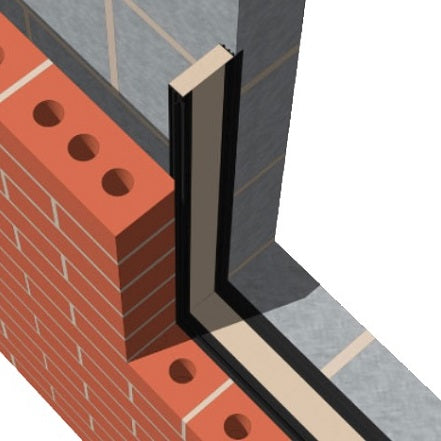
What are Cavity Closers and Cavity Formers?

If you are planning to install new windows or doors in your home, you may have come across the terms "cavity closers" and "cavity formers." In this blog post, we will explore what these terms mean and how they can benefit your home.
What are Cavity Closers?
Cavity closers are insulation products that are used to fill the gap between the window or door frame and the wall. This gap, known as the cavity, is typically 100mm wide and is designed to provide insulation and prevent moisture from entering the building. However, if this gap is left unfilled when a new window or door is installed, it can create a thermal bridge that can reduce the overall energy efficiency of your home.
Cavity closers are designed to fit tightly into the cavity, filling the gap and preventing air and moisture from entering the building. They are typically made from a range of materials, including PVC, foam, and mineral wool, and come in a range of sizes and shapes to fit different types of windows and doors.
What are Cavity Formers?
Cavity formers, also known as cavity closers with integral insulation, are similar to cavity closers, but they also include insulation material to provide an extra layer of insulation for your home. They are typically made from a rigid foam insulation material, such as expanded polystyrene or polyurethane, and are designed to fit snugly into the cavity, providing a continuous layer of insulation around the window or door.
Cavity formers are particularly beneficial in new build homes, where they can help to achieve higher levels of energy efficiency and reduce the carbon footprint of the building. They can also be used in retrofit projects, where they can help to improve the energy efficiency of existing homes and reduce heating bills.
Benefits of Cavity Closers and Cavity Formers
The main benefits of cavity closers and cavity formers include:
- Improved energy efficiency: By filling the gap between the window or door frame and the wall, cavity closers and cavity formers can help to reduce heat loss and improve the overall energy efficiency of your home.
- Reduced condensation: By preventing moisture from entering the building, cavity closers and cavity formers can help to reduce the risk of condensation and damp problems in your home.
- Enhanced comfort: By reducing heat loss and preventing drafts, cavity closers and cavity formers can help to make your home more comfortable and reduce cold spots around windows and doors.
- Lower heating bills: By improving the energy efficiency of your home, cavity closers and cavity formers can help to lower your heating bills and reduce your carbon footprint.
- Improved sound insulation: Some cavity closers and cavity formers are also designed to provide enhanced sound insulation, helping to reduce noise pollution from outside your home.
Conclusion
If you are planning to install new windows or doors in your home, cavity closers and cavity formers can be a valuable addition to your insulation strategy. They can help to improve the energy efficiency of your home, reduce heating bills, and enhance the overall comfort of your living space. It is important to choose the right product for your specific needs, taking into account factors such as the type of window or door, the size of the cavity, and the level of insulation required. A professional installer can help you select the best cavity closer or cavity former for your project and ensure that it is installed correctly for optimal performance.
In summary, cavity closers and cavity formers are insulation products that are used to fill the gap between the window or door frame and the wall. They can help to improve the energy efficiency of your home, reduce heating bills, and enhance comfort by preventing drafts and reducing heat loss. If you are planning to install new windows or doors, consider using cavity closers or cavity formers to achieve optimal insulation and energy efficiency.


